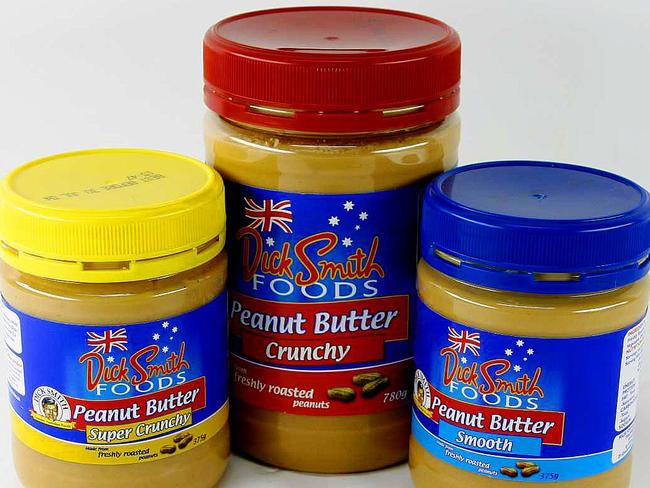How much of Australia’s food is imported from overseas
Australia grows enough to feed our population several times over – but trade data reveals the staggering amount of food we import. The question is: why?
National
Don't miss out on the headlines from National. Followed categories will be added to My News.
Australia grows enough veggies to feed between 70 and 80 million people a year, but despite this we spent $215 million importing fruit and vegetables in one month alone, national trade data reveals.
Aussie businesses imported $76 million in fresh fruit, $56 million in preserved or processed fruit, $27 million in fresh vegetables and $64 million in preserved or processed vegetables in August alone.
We also brought in vast quantities of beverages, including $161 million worth of alcohol, $29 million in non-alcoholic drinks, $14 million worth of fruit juice and $43 million in milk (plus associated products).
Entrepreneur Dick Smith said Australia should move towards food self-sufficiency.
“Our poor dairy farmers are absolutely battling – but then we import $43 million in milk – it’s just unbelievable,” Mr Smith told News Corp Australia.


Mr Smith knows more than most about the challenges of getting local consumers to buy Australian food, having closed down his all-Australian grocery range Dick Smith Foods in 2019 after 20 years in business.
“The problem is we share the wealth better here,” he said
“We have one of the highest minimum wages in the world – and food, especially fresh food and fruit, has quite a high labour content. That’s why we’ll always be more expensive.”
Mr Smith said a majority of Aussies, when surveyed, say they prefer to buy Australian products, and some are prepared to pay 30 or 40 cents more for an item, but most will not pay an extra dollar or two for an Australian food product.
Michael Coote from growers’ association AUSVEG told News Corp that Australia was largely self sufficient in terms of vegetables, apart from onions and garlic, which we import from China, and asparagus, which we bring in from Mexico and Peru.
Those three products represented 88 per cent of total vegetable imports by value and volume in 2019, he said.
“Australia is very much covered, with domestic production here 52 weeks a year, with peak production periods shifting from region to region,” Mr Coote said.
“For example with broccoli or lettuce, the peak growing period is winter in Queensland but it’s summer in Victoria. Growers are able to supply close to 100 per cent of what Australians consume in terms of vegetables.”
According to AUSVEG, between six and seven per cent of vegetables grown in Australia are exported, with the rest going to domestic retail, food service and processing.
The volume of fresh veggies we import has increased over the years, as our population has boomed – from 16,594 tonnes in 2000 to 27,760 tonnes last year.
But those imports have declined 9.6 per cent in volume in 2020 so far.
Mr Coote said part of that decline could be attributed to supply chain disruptions brought on by the COVID-19 outbreak.
“There’s less planes in the sky so anything that’s perishable that normally would travel by airfreight is having a much more difficult time, or it’s much more costly, and also shipping lanes for sea freight have also been impacted throughout Covid, with voyage times blowing out by seven to 14 days. With perishable goods that can be the difference between a product landing in a consumable state or the alternative,” Mr Coote said.

Mr Smith said the outbreak may also have shifted consumer behaviour.
“I have noticed a slight change in the last few months. More people are saying to me they’re making an effort to buy an Australian product,” he said.
Other consumers are saying no to imported foods on environmental grounds.
“To bring peanut butter in its container all the way from Argentina, the food miles are staggering,” Mr Smith said. “I’m amazed with the incredible cost of freight that we’re still not competitive. You would have thought that with the long distances involved we would be able to compete.”
Food and beverage manufacturing was identified as one of six industries to benefit from $1.5 billion in development funding in the recent Federal Budget.
Mr Coote said Australia used to process more food locally but it started becoming unviable five or ten years ago.
“There is opportunity there, but it’s not without its challenges, and that’s why we have been importing the majority of what we do in tinned or other processed vegetable products, particularly over the last decade or so,” Mr Coote said.
A spokersperson for the Australian Food and Grocery Council said a number of foods such as cocoa beans for chocolate, coffee beans and tea would always need to be imported, either because they could not be grown here, or not in sufficient quantities.
The Council is currently working on a report detailing why investment in food and beverage manufacturing has been weak in Australia over the past eight years. The report is due in early 2021.
MORE NEWS
Australian Made designer slams new national logo
Who actually owns Australia’s iconic food brands
Five easy ways to save at the supermarket
Originally published as How much of Australia’s food is imported from overseas

